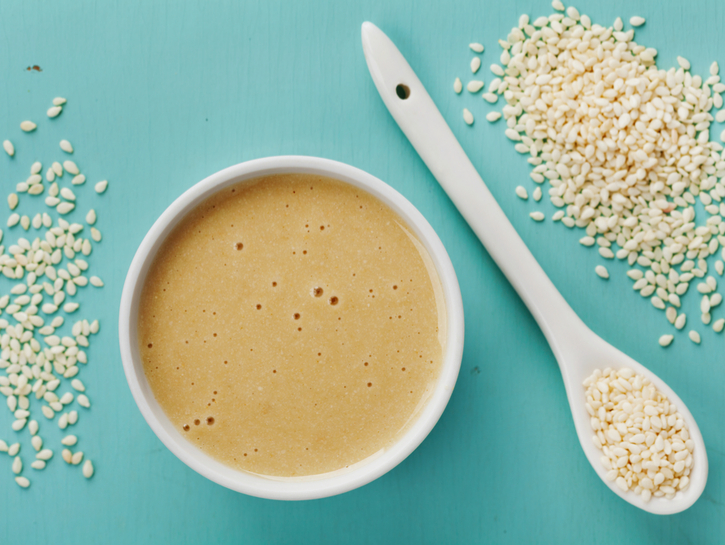Though most Americans might associate sesame seeds with hamburger buns, they are a powerful ingredient in a many Middle Eastern dishes. Sesame seeds are a superfood with incredible health benefits and are regarded as one of the most important and necessary ingredients in many dishes throughout the Eastern Hemisphere.
While sesame seeds are commonly used as a garnish and seasoning, they are also used as a creamy paste called tahini — but what exactly is this paste, and what makes it so useful?
What Is Tahini?
Tahini is a paste made from ground sesame seeds and oil. Tahini has a pasty yet creamy texture, similar to peanut butter and other nut butters. Though the sauce isn’t as well known in the U.S., it’s widely popular throughout the Middle East in many dishes.
Because sesame seeds contain so many nutrients, tahini is also packed with nutritional benefits including omega-3 and omega-6 fatty acids, calcium, iron and magnesium.

Alexander Prokopenko/Shutterstock
How To Use Tahini
Tahin Pekmez
Tahin Pekmez is a Turkish recipe that is spread onto bread. It’s incredibly simple to make — literally all you have to do is combine tahini and molasses and you have an impossibly sweet spread to eat for a snack or dessert.
Hummus
Though tahini isn’t used as a dip on its own, the paste is a key ingredient in hummus. Simply blend chickpeas into the tahini with olive oil, lemon juice and spices and you’ll have a delicious healthy snack.

etorres/Shutterstock
Gyro With Tzatziki Sauce
Tahini sauce can be added to tzatziki sauce and used in gyros and other Mediterranean dishes. Simply mix it in with traditional tzatziki ingredients such as yogurt and lemon juice and you have a creamy paste to spread on a pita.
Halva
Halva is a sweet, crumbly candy that is popular in the Middle East and comes in many different flavors. Combine the tahini with sweeteners such as sugar, cinnamon and vanilla extract with water, cloves and lemon juice, cook on the stove and refrigerate for 24 to 36 hours. You won’t be able to stop yourself from chowing down.
Baba Ghanoush
This Syrian dish is made from tahini, mashed eggplant, olive oil and seasonings. It has a pulpy texture and a smoky taste that is traditionally eaten as a dip with pita bread. Though working with the eggplant can be a long process, the end result is worth the effort.
